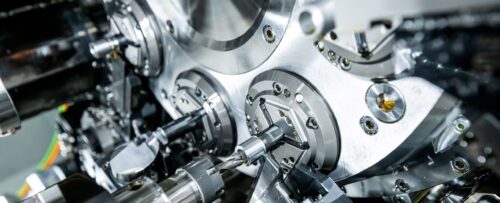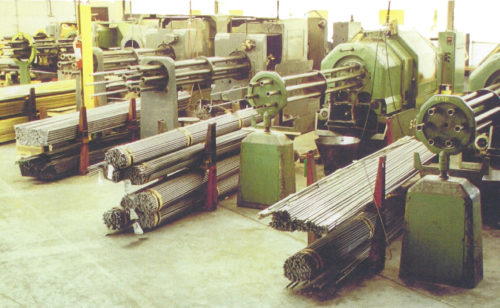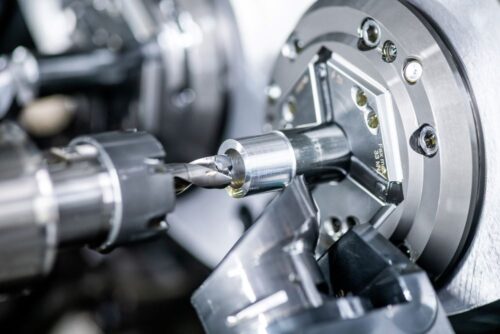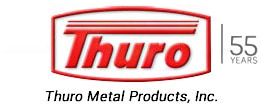
All engineering processes and methodologies are designed while keeping in view specific objectives such as minimum use of resources, maximum output, cost optimization, and time management. These factors help in deciding which process is best and most efficient.
Multi-Spindle machining is an example of one such process that conforms to the definition of process optimization and resource management. Technically, it is a screw machining process in which the material or workpiece is cut into small pieces simultaneously by using multiple tools. Multi-spindle machining is a cost-effective method for producing large quantities of small or medium-sized parts and components.
In machining, a spindle refers to the whole rotating unit of a lathe, which includes the shaft, bearings, and other integral pieces. Unlike single-spindle machining, the employment of many spindles in a machining system is referred to as multi-spindle machining.
Automatic screw machines are in the metal working lathe family. In the past automatic screw machines were used to literally make screws, hence the name. Today screws are more efficiently fabricated using a cold-heading process. Automatic screw machines have evolved to make custom designed precision component parts.
The Muti-Spindle Automatic lathe is ideal for precision parts with medium complexity from materials such as aluminum, brass, stainless steels, stress proof steel as well as alloy steels such as 8620 and 4140. Often, profile material most commonly in the shape of a hexagon are fed into the machine. This permits the final component to have wrench flats without the time and expense of milling each of the six surfaces found on a hexagon. Part complexity is facilitated by these machines having 6 or 8 stations which are also spindles hence Multi-Spindle Automatic machines. The relevance of this design exists to this day given that as many as 14 tools can machine the bars simultaneously. This over-lapping of machining processes often produces part cycle-times which are under 20 seconds per part.
Multi-Spindle Machining at Thuro Metal Products
The foremost priority of Thuro has always been the provision of precision metal products for any industry and services such as CNC milling, Complex precision assemblies, multi-spindle machining, etc. At Thuro, customers have ensured the availability of a high-quality multi-spindle machining facility through their reviews. Following are the salient features of the multi-machining service of Thuro:
• Up to 8 spindle setups
• Precise tolerances typically up to ±.0005 using advanced tooling
• Specialists in machining stress-proof steel
• Ability to fabricate parts measuring up to 7″ in length and from 1/4″ to 2 3/8″ in diameter
• In-house tool manufacturing
• Materials such as aluminum, steel, brass, copper, and titanium parts
• Availability of turning, boring, drilling, and slotting machining techniques, as well as on-machine threading, numbering, tapping, and pick-off for post-cut-off shaping or back finishing
• ISO-certified quality procedures
Multi-Spindle Machining Materials & Process
To understand how multi-spindle machining is done below are facts and information about the process:
• Multi-spindle screw machines are turning machines that act on material components concurrently using a number of tools positioned on a central spindle.
• A precision-machined drum rotates horizontally and carries many spindles.
• The machine splits the entire number of operations across the spindles to finish a component in one full rotation of the drum.
• Multi-spindle screw machines provide a highly efficient manufacturing method by completing one item per drum index.
The materials that can be employed in the multi-spindle machining process are copper, aluminum, steel, brass, and titanium parts.
Multi-Spindle Machining Benefits
Following are some of the most useful benefits of the multi-spindle machining process:
• One of the most important benefits is that it saves a lot of machining time which could have been greater in the case of single-spindle machining.
• As obvious from its name, it can machine multiple workpieces simultaneously.
• Multi-spindle screw machines execute a greater range of operations inside a single drum rotation, such as:
○ Slotting
○ Cross-drilling
○ Threading
○ Broaching
• Shorter cycling times made achievable by removing secondary machining operations allow for value-added cost reductions due to the increased capacity.
• These machines also benefit from economies of scale, lowering the cost of each individual part as the manufacturing run size grows.
Multi-Spindle Machining Applications
The competitive advantage of multi-spindle machining as compared to single-spindle machining is that it has a wide range of applications. Some of which are in:
• Automotive Industries
• Aircraft Industries
Processes such as:
• Turning
• Chamfering
• Threading
• Drilling
• Grooving
• Forming
• Reaming
• Gear hobbing
• Keyway milling
• Cross-drilling
• Broaching
• Back working
• Burnishing
• Stamping
• Swaging
• Shaving
• Flat generation
• Thread rolling


